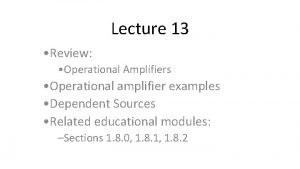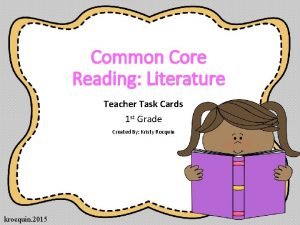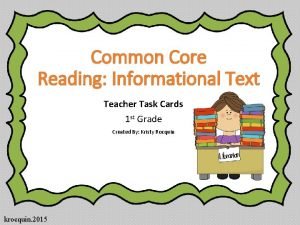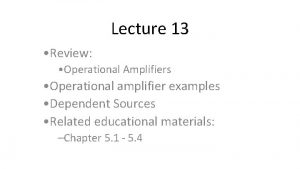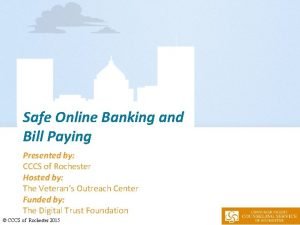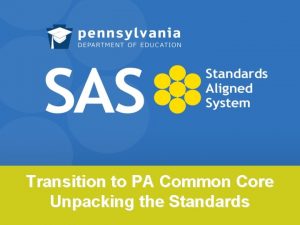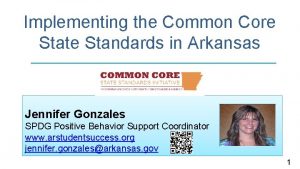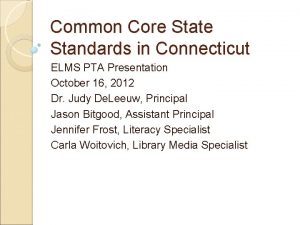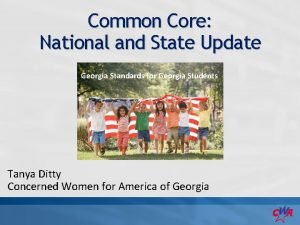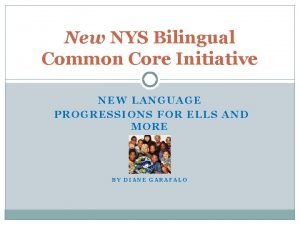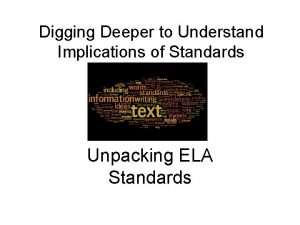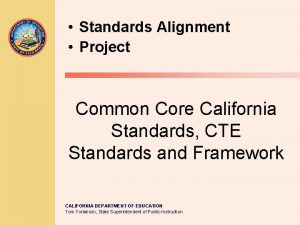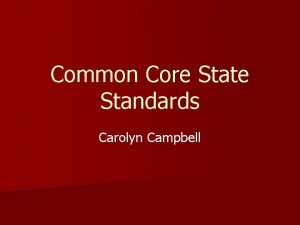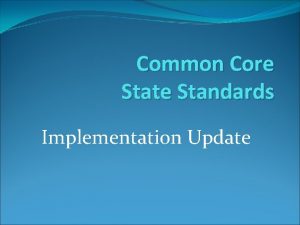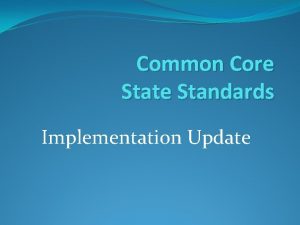California Common Core Standards CCCS California Common Core










- Slides: 10

California Common Core Standards CCCS = California Common Core Standards

Federal Purpose for Common Core Standards Common Core standards corresponds with the original NCLB timeline of 2014 Students need real world skills for college and the workforce Standards address international competition, equity and collaboration

California Common Core Standards California adopted the Common Core (National) in August 2010 - CCS California inserted 15% of current state standards into CCS Final set for California are called California Common Core Standards or CCCS

California Common Core Standards Aligned with college and work force expectations Clear, understandable, and consistent Rigorous content and application of knowledge through higher-order skills Recognition of the strengths and lessons of current state standards

CCCS for ELA and Literacy in History/Social Studies, Science and Technical Subjects ELA standards focus equally on fiction and nonfiction Inclusion of Listening and Speaking Standards in ELA for all students Stronger description of standard English conventions and language vocabulary acquisition Separate set of literacy standards for content courses (6 th – 12 th) which focus on communication, reading and writing skills required for college and career success

CCCS for Mathematics CCCS standards for mathematics: ◦ Focus on the Mathematical Practice Standards K-12 ◦ Develop Conceptual Understanding ◦ Emphasis on Mastery ◦ Balance mathematical understanding and procedural skill ◦ Focus on Fractions ◦ Are internationally benchmarked

CCCS Standards for Mathematical Practice K-12 1. 2. 3. 4. 5. 6. 7. 8. Make sense of problems and persevere in solving them Reason abstractly and quantitatively Construct viable arguments and critique the reasoning of others Model with mathematics Use appropriate tools strategically Attend to precision Look for and make use of structure Look for and express regularity in repeated reasoning

Standard of Modeling Links classroom mathematics and statistics to everyday life, work and decision-making. A model can be very simple, or quite complex. Modeling is best interpreted not as a collection of isolated topics but rather in relation to other standards. Examples: Design the layout of the stalls in a school fair so as to raise as much money as possible.

Accountability System The CCCS are expected to be implemented by 2012 -2013 CST will be replaced with a national exam in 2014 - 2015 National assessments will be administered in grade 3 -8 and once in high school New national exams are being developed by two major organizations: ◦ Smarter Balance Assessment Consortium (SBAC) – Washington State ◦ Partnership for Assessment of Readiness for College and Careers (PARCC) - Florida

New Accountability System Assessment will also include documentation that students are on track to become college and career ready. Assessments are proposed to be NWEA “like”, assessing 4 times a year and computer based and project based. Federal government is challenging all states to develop (if they have not already) a growth model rather than a proficiency model of assessment. California currently has a growth model.
